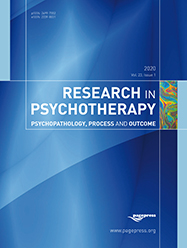The role of oxytocin as an indicator of outcome and therapeutic alliance
All claims expressed in this article are solely those of the authors and do not necessarily represent those of their affiliated organizations, or those of the publisher, the editors and the reviewers. Any product that may be evaluated in this article or claim that may be made by its manufacturer is not guaranteed or endorsed by the publisher.
Authors
Oxytocin is a neuropeptide produced by the hypothalamus and involved in numerous functions, such as labor and breastfeeding. The literature has highlighted the critical role of this hormone in interpersonal relationships – particularly in mother-child and sentimental relationships – implicating it in attachment bonds. Several recent studies have examined the activation of oxytocin in the psychotherapeutic relationship. This narrative review article describes the modulation of the oxytocinergic axis in patients and therapists, based on a review of papers identified through searches of PsycINFO, PubMed, and RivistaWeb, from January 2015 to May 2024. The results of this literature review support the hypothesis that changes in oxytocin levels during interactions between therapist and patient are associated with the therapeutic process by activating the attachment system. Furthermore, this mechanism does not appear to be influenced by the therapist’s theoretical model of reference but rather by their ability to empathize with the patient. In conclusion, this mini-review highlights the significant function of oxytocin as a potential biomarker for assessing the patient-therapist relationship, identifying a biological substrate of the therapeutic alliance.
How to Cite

This work is licensed under a Creative Commons Attribution-NonCommercial 4.0 International License.






